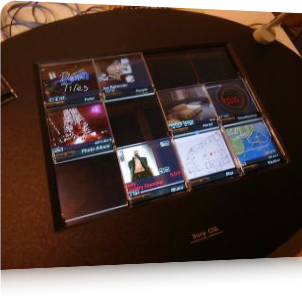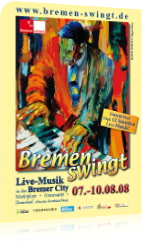 Vor kurzem wurde auf der World Wide Developer Conference (WWDC) der Firma Apple Inc. eine Vorschau auf das kommende UNIX-Betriebssystem Mac OS X Leopard gegeben. Unter anderem wurde eine neue Funktion in den Vordergrund gestellt, die TimeMachine genannt wird. Diese Funktion ist offenbar erdacht worden von einem Forscher namens Jun Rekimoto, seines Zeichens Direktor des Interaction Laboratory der Sony Computer Science Laboratories, Inc. in Tokyo.
Vor kurzem wurde auf der World Wide Developer Conference (WWDC) der Firma Apple Inc. eine Vorschau auf das kommende UNIX-Betriebssystem Mac OS X Leopard gegeben. Unter anderem wurde eine neue Funktion in den Vordergrund gestellt, die TimeMachine genannt wird. Diese Funktion ist offenbar erdacht worden von einem Forscher namens Jun Rekimoto, seines Zeichens Direktor des Interaction Laboratory der Sony Computer Science Laboratories, Inc. in Tokyo.
 Rekimoto stellt auf seiner Webseite zu seiner Arbeit mit dem Titel „Time-Machine Computing“ Screenshots von einem Prototypen vor, den er „TimeScape“ nennt. Offenbar hat Apple nun genau diese Arbeit als Grundlage für das Produktfeature des kommenden Betriebssystems verwendet. Interessant ist auch was Rekimoto in dem Projekt „DataTiles“ (siehe Bild links) bereits 2001 vorgestellt hat. Ich würde sagen hier ist soeben mein neues Idol in Sachen HCI Design und Tangible Computing auf dem Radar erschienen. Hätte ich mal früher bei netzspannung.org vorbeigeschaut, denn da ist das DataTile-Projekt auch beschrieben.
Rekimoto stellt auf seiner Webseite zu seiner Arbeit mit dem Titel „Time-Machine Computing“ Screenshots von einem Prototypen vor, den er „TimeScape“ nennt. Offenbar hat Apple nun genau diese Arbeit als Grundlage für das Produktfeature des kommenden Betriebssystems verwendet. Interessant ist auch was Rekimoto in dem Projekt „DataTiles“ (siehe Bild links) bereits 2001 vorgestellt hat. Ich würde sagen hier ist soeben mein neues Idol in Sachen HCI Design und Tangible Computing auf dem Radar erschienen. Hätte ich mal früher bei netzspannung.org vorbeigeschaut, denn da ist das DataTile-Projekt auch beschrieben.
Why do I blog this? Diesmal ist es ganz einfach: Ich interessiere mich natürlich in der heutigen Zeit auch dafür, wie Forschungsergebnisse in der praktischen Anwendung ankommen können. Herr Rekimoto hat das offenbar geschafft. Jetzt müsste ich Ihn bloß mal fragen wie. Die anderen Arbeiten von Rekimoto sind nicht weniger beeindruckend, vor allem DataTiles hat mich schwer beeindruckt. Die Modularität der „Tiles“ ist etwas, was aus meiner Sicht Tangible Computing at its best darstellt.

 Das vom Schulbuchverlegerverband
Das vom Schulbuchverlegerverband  Seit heute beginnt das erstmalig stattfindende, 4tägige Programm
Seit heute beginnt das erstmalig stattfindende, 4tägige Programm